DIY: How to Create Hand Casting Art Using Alginate
I love crafts and I love new things. When I get to craft with new supplies or techniques, I totally flip. So, I bought a couple of boxes of plaster of Paris a while back ago with no real intentions on how to use the stuff. Searching Amazon on my phone out of boredom one day I ran into the most awesome stuff – alginate
.
Now, what is alginate you might ask? Have you ever been to the dentist and had to sit with that awful purple goop in these plastic trays? That awful stuff is oozing down the back of your throat, all so your dentist can tell what your teeth look like? Well, that, my friend, was alginate. It’s this stuff that is made out of, you guessed it, algae and not only dentists use it. It’s used in food as a thickener, it’s used by doctors in medicines and special wraps to heal injuries and it’s used by artists for loads of things.
So, I bought six pounds of the stuff, straight off of my phone with no idea what to do with it. But come on, being able to buy this stuff online is awesome and I was gonna do it regardless. A little more research later and I found this art called lifecasting. People use alginate to create casts of body parts as art or keepsakes or special effects/body parts for movies.
I just so happen to be needing some place to hang all of my lovely necklaces. But I’ll be darned if I’m going to attach some pretty knobs to an old piece of wood just because everyone else is doing it. Holding onto a necklace I realized that my hands would be an awesome place to hang them and they’d be pretty neat and artsy too… So, if you want to cast the hands of friends and family, check out the supply list below!
SUPPLY LIST:
- pitcher
- dry measuring cup
- liquid measuring cup
- wooden spoon
- rectangular shaped bowl
(I used a reusable/disposable food storage container in the 8 cup size)
- water
- alginate
- plaster of Paris
- knife
- self-adjusting (sawtooth) picture hangers
with spikes to push in
Step 1: First things first – mixing your alginate and transferring it to the container you will be making the mold in. The manufacturer recommends that you use a 1:1 ratio with water. For my 8 cup container, I used 7 cups of water and 7 cups of alginate. First, pour your water into your pitcher and then follow with your alginate powder and stir vigorously. It will begin to set pretty quickly, so really get it stirred quickly. When you are happy that there are no lumps of powder remaining, pour them into your mold container.
Step 2: Place your hand into the goo. I mean alginate. Make sure that your model’s hand is not touching the bottom or sides. Also, be sure not to go into the goo up to the wrist or beyond. You’ll need to go only as far as the wider portion of the hand – go to the wrist and you may not get out of it. Make your model move their fingers around to make sure that you have alginate settled into all of the little pockets and crevices a hand will make.
Sit tight, about 10 minutes or so, as still as possible while the mold begins to set around the hand. Feel the top of the alginate from time to time. When it’s firm to the touch, your model can remove its hand. First, wriggle the fingers around to loosen and then carefully pull the hand completely out of the mold.
Step 3: Mix your plaster of Paris per the manufacturer’s suggestion. Slowly pour the liquid into your mold. About halfway through, roll around the bowl to try and help the plaster up into all of the nooks and crannies. *** NEVER put hands directly into the plaster to form a mold. It won’t work and you’ll lose a finger!
Allow the plaster to fully cover the hole – you can break away the extra later – so no worries there. Finish filling up and tap around the sides of the bowl with your wooden spoon to help break up any air bubbles in the mixture.
Move the mold someplace warm for about 4 hours. Most plaster says 1 is adequate but I say the longer the better. Besides – the first hand I did fell apart and that was only an hour. Play it safe!
*** When cleaning your pitcher and utensil you used to mix your plaster, DO NOT wash it out in your sink. Take it outside with the hose. You will encounter some nasty plumbing issues if plaster of Paris sets up in your pipes!
Step 4: Loosen and remove your mold and cast from its container. You may want to go around and use a towel and soak up any excess moisture that is left on the surface. Place the wrist portion of the hand down in front of you, so that the fingers are pointing up at you. Take a sharp knife and gently and slowly carve away bits of the alginate. Take care because when you run into plaster, you can easily nick or cut your cast.
When you’ve finally liberated your hand, place it someplace warm (like the garage) for several days to dry completely.
Step 5: If you want to hang your hands on the wall, as I did, push your hangers into the backside of the cast. Even after drying for some time, the plaster will still receive the hangers easily and will stick in very well.
Should you want to paint your hands for a little extra flair, feel free to use acrylics. I painted mine glossy white!
Well, that’s it for this week! Get to casting hands, or other various body parts, for your walls, paperweights, you name it!
A crafter since her earliest years, Allison spends a little time every day making something. She crafts, sews, paints, glues things onto other things, and is a firm believer that a life spent creating is a life worth living. Visit Allison’s blog, Dream {a Little} BIGGER.


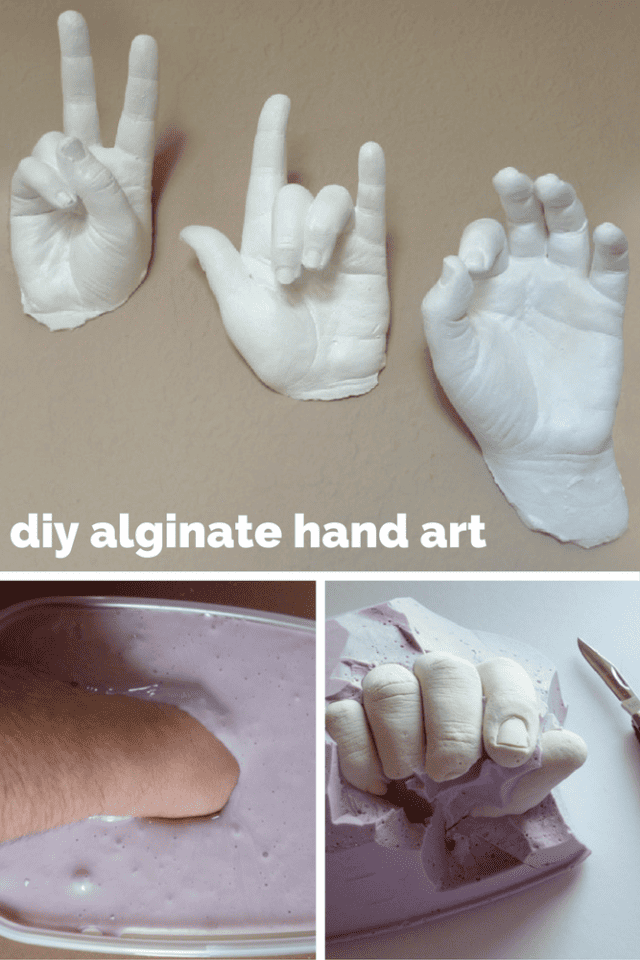
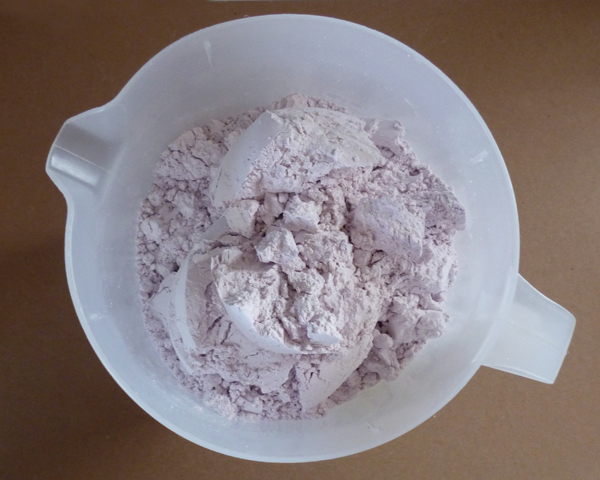
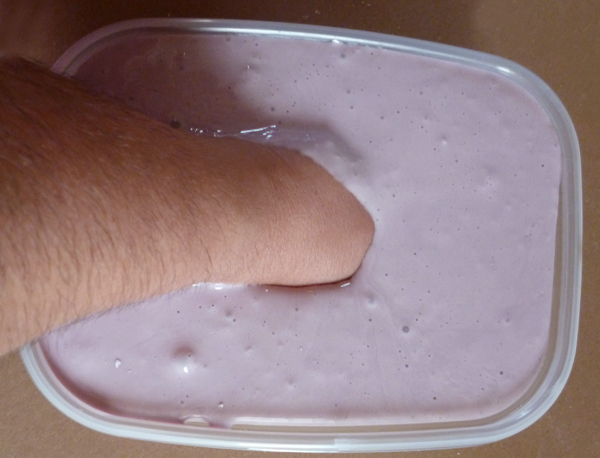
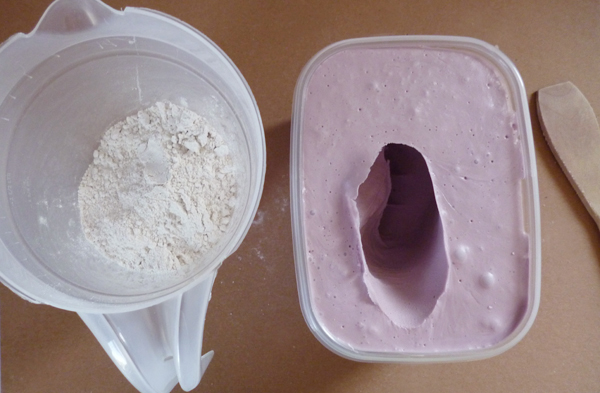
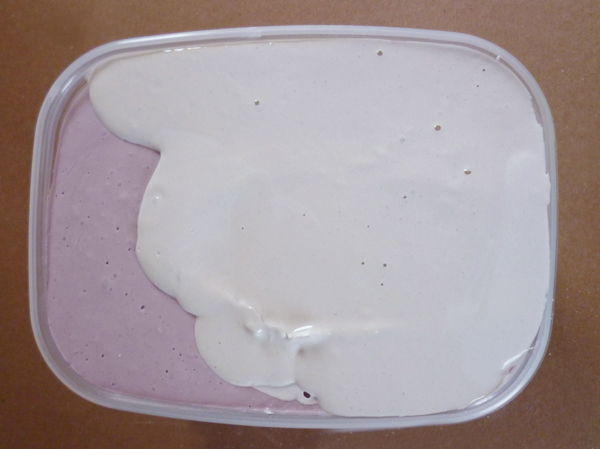

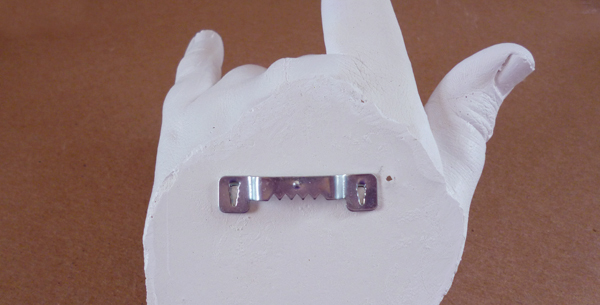
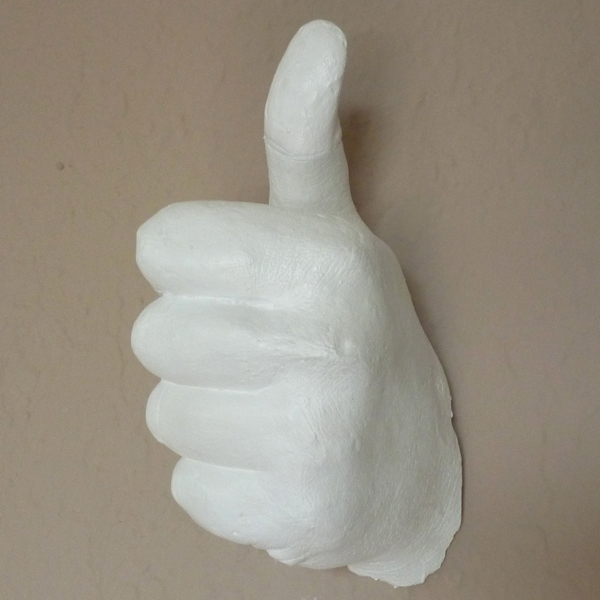
34 Comments on “DIY: How to Create Hand Casting Art Using Alginate”
I think this is so cool!
Love love love. Amazing idea and very detailed. Did I say I love it yep
This is great! I wish I could get my 2yr old to hold still long enough to do it but I couldn’t truxt him to keep his hand or fingers still. I plan to done oneof me and my husband’s hands cupped and use the sculpture as planters for those lil decorative cacti or even makes for candles! so many cute ideas! utensile holders, book-ends, jewlery hanger, halloween decorations! good grief I better buy ALOT of ingredients! lol
I think you’re probably right on a 2 year old. And it also sounds like you need to order a couple of boxes of everything! Good luck and send us pics of your projects if you think of it.
Oh this is a neat idea, love it!
next time i suggest making a mold seam after you make it so you can easily pry it off afterwards. if done well you can even reuse the mold a few times.
I have an imprint of my son and I holding hands. Unfortunately, it is the only tangible reminder that I have of him. This post brings back fond memories. Off to look at our creation.
Besos, Sarah
Blogger at Journeys of The Zoo
Finding Humour in Everyday Life
Pingback: DIY: A Real Hands On Craft Using Alginate - fancy-deco.com
There’s a dude at the Big-E who does this. He even bronzes stuff. Cool guy. Just got a beautiful statue with my ex about three years ago.
Too bad it suddenly broke when we broke up.
Pingback: Using Alginate Moulds | pinfollow.me feeds
Pingback: Using Alginate Moulds « Today's top 10 Diy Tutorials
It is awesome post.Thanks
Very very interesting! Thanks for such a lovely post.
Then, a specially trained and licensed remediation expert will
remove the mold infected portions of your home, or contents, and take them to a hazardous waste dump for disposal.
The cooler surfaces of a crawlspace or basement act the same as the can. Questions
to always ask should include facts about their education,
training, and business.
I read this piece of writing fully concerning the resemblance of most recent and earlier
technologies, it’s awesome article.
where can I buy alginate?
Pingback: This Incredibly Handy DIY Project Makes For Some Quirky, Personalized Home Decor – Hot Topix Now
Pingback: This Incredibly Handy DIY Project Makes For Some Quirky, Personalized Home Decor | MYHOTNEWS
Pingback: This Incredibly Handy DIY Project Makes For Some Quirky, Personalized Home Decor | Unheard Facts
Pingback: This Incredibly Handy DIY Project Makes For Some Quirky, Personalized Home Decor
Would a 3lb bag of alginate enough based on your instructions, or should get a big bag?
This is such a cool use of the icky dentist goo! Love it and I actually need to make these. Maybe in neon… or glow in the dark for the music room, but yes, thank you for sharing this. I have tweeted and pinned it for later. This will definitely be one of the pins that I actually follow through with though!
From Lynsey @ http://wheres-my-pencil.blogspot.co.uk
We made hands as a school project creating the American Sign Language alphabet. Additional items were added around the hand to illustrate the letter, such as a scissors, a sliver bracelet, a shoe for the letter S. An egg, a model elephant for the letter E. I found that people with thicker fingers were the best models. The fingers didn’t break off.
Also when pouring in the plaster if you have undercuts where it might be difficult to get plaster or get the air out, insert a thinner plastic tubing into the space as you pour. That allows the air to escape and plaster to fill the space. Then tap the model on the table to bring air bubble to the top. If you have a tall enough container you can pour extra plaster to make a base if you want to stand the sculpture up.
Alginate can be purchased in bulk from Blick Art Supplies.
Wow awesome
My hand needs help! Two fingers fell off! What is the best way to re-attach?
is this aviable in pakistan
Regarding the long wait. I want to use this for a school project but we’ll be making the sculptures on a Tuesday and take it out from the container on Thursday. So instead of 4 hours it will be two days. Is this okay? Or might it break or not come out at all?
Can I do this with my dog? Paw print?
Excellent craft. I got a statue of my own hand. Loved this article.
Fabulous!
Hi, what kind of alginate to be used. I tried with alginate but it became a gel like substance and I was not able to take the mould. My friend told me that alginate to be mixed with some other chemicals to do the mould. Can you please tell me what are the chemicals to be added?
Thanks, this is really cool.
Hey there . How much alginate did you use? I followed your link to Amazon but Im not sure what size bag to buy. Would the one pound bag be enough?
After doing the baby’s foot, the baby got white bumps and still has red marks on the baby’s leg leg ? Help what is this ??